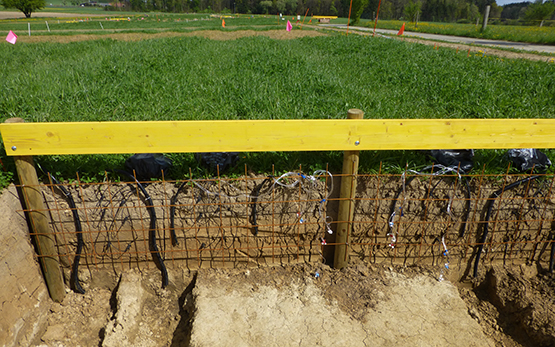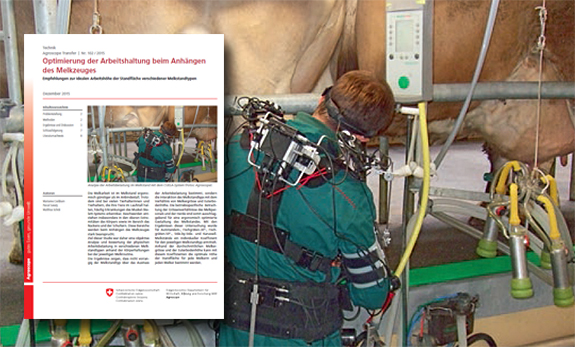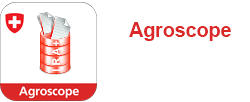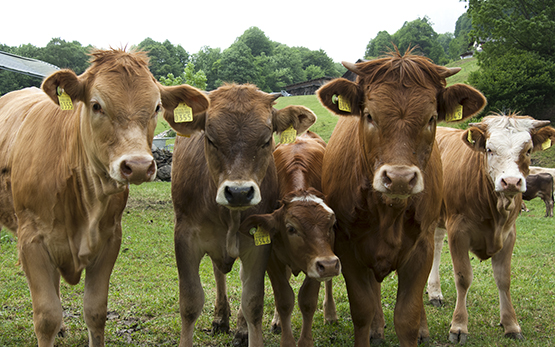Anken T., Latsch A. J., Simmler M., Levy Häner L., Herrera Mourente J. M., Wuyts N., Argento F., Kramer B., Bachmann F., Liebisch F.
Modulazione intraparticellare della concimazione.
Agroscope. Scheda tecnica N. 239, 2025, 4 pp.
altre lingue:
tedesco | francese
Wetterlind J., Simmler M., Castaldi F., Borůvka L., Gabriel J. L., Gomes L. C., Khosravi V., Kıvrak C., Koparan M. H., Lázaro-López A., Łopatka A., Liebisch F., Rodriguez J. A., Savaş A. Ö., Stenberg B. e altri
Influence of soil texture on the estimation of soil organic carbon from Sentinel‐2 Temporal Mosaics at 34 european sites.
European Journal of Soil Science, 76, (1), 2025, Articolo e70054.
Brouwers S., Simmler M., Scriba M., Savary P.
Cubicle design and dairy cow rising and lying down behaviours in free-stalls with insufficient lunge space.
Animal, 18, (10), 2024, Articolo 101314.
Simmler M., Brouwers S.
triact package for R: Analyzing the lying behavior of cows from accelerometer data.
PeerJ, 12, 2024, 1-17.
Brouwers S., Simmler M., Savary P., Scriba M.
Automatic detection of atypical head lunge movements of dairy cows in free-stall cubicles using accelerometers and machine learning.
In: 56th Congress of the International Society for Applied Ethology. 3 August, Tallinn (EE). 2023, 141.
Vontobel C., Simmler M., Wechsler B., Scriba M.F.
Risk factors differ for viable and low viable crushed piglets in free farrowing pens.
Frontiers in Veterinary Science, 10, 2023.
Brouwers S., Simmler M., Savary P., Scriba-Janulis M.
Towards a novel method for detecting atypical lying down and standing up behaviors in dairy cows using accelerometers and machine learning.
Smart Agricultural Technology, 4, 2023, 1-11.
Berthel R., Simmler M., Dohme-Meier F., Keil N.
Dairy sheep and goats prefer the single components over the mixed ration.
Frontiers in Veterinary Science, 9, 2022, 1-12.
Simmler M., Meyer P., Liebisch F.
Bodeninformation aus Radioaktivität.
UFA-Revue, 9, 2022, 20-22.
Rosenberger K., Simmler M., Langbein, J., Nawroth, C., Keil N.
Responsiveness of domesticated goats towards various stressors following long-term cognitive test exposure.
PeerJ, online, (29 March), 2022, 1-25.
Argento F., Liebisch F., Simmler M., Ringger C., Hatt M., Walter A., Anken T.
Linking soil N dynamics and plant N uptake by means of sensor support.
European Journal of Agronomy, 134, 2022, 126462-126472.
Rosenberger K., Simmler M., Langbein J., Nawroth C., Keil N.
Kognitive Tests zur Umweltanreicherung von Nutztieren? Auswirkungen auf das Wohlbefinden und ihre Relevanz für die Haltung von Ziegen.
In: Kognition bei Nutztieren. März, Ed. Internationale Gesellschaft für Nutztierhaltung (IGN), München. 2021, 38-41.
Rosenberger K., Simmler M., Keil N., Langbein J., Nawroth C.
Auswirkungen langfristiger kognitiver Stimulation auf das spätere Verhalten von Ziegen in einem räumlichen und einem instrumentellen Kognitionstest.
KTBL-Schrift, 523, 2021, 69-71.
Rosenberger K., Simmler M., Langbein J., Keil N., Nawroth C.
Performance of goats in a detour and a problem-solving test following long-term cognitive test exposure.
Royal Society Open Science, 8, 2021, 1-15.
Simmler M., Mielewczik M., Liebisch F.
Luftbild zum Schnäppchenpreis.
UFA-Revue, 10, 2021, 68-69.
Rosenberger K., Simmler M., Langbein J., Keil N., Nawroth C.
Performance of goats in a spatial detour and a problem-solving task following long-term cognitive test experience.
In: 54th International Congress of the International Society for Applied Ethology (ISAE). Ed. International Society for Applied Ethology (ISAE). 2021, 64-64.
Simmler M., Hart L., Liebisch F.
Generalizability of multi- versus single-target regression for herbage mass and quality prediction from multispectral imagery.
In: Sensing – New Insights into Grassland Science and Practice, Grassland Science in Europe, Vol. 26. 21, Ed. Symposium of the European Grassland Federation, University of Kassel. 2021, 59-61.
Rosenberger K., Simmler M., Langbein J., Nawroth C., Keil N.
Cognitive testing as enrichment for farm animals? Assessment of welfare outcomes and their relevance for housing.
In: Proceedings of the Virtual Symposium “Farm animal cognition and its implementation into animal husbandry and management”. Ed. Nawroth, C. and Jordt, J.-N., Leibniz-Institut für Nutztierbiologie (FBN Dummerstorf. 2021, 16-17.
Rosenberger K., Simmler M., Nawroth C., Langbein J., Keil N.
Goats work for food in a contrafreeloading task.
Scientific Reports, 10, 2020.
Rosenberger K., Simmler M., Nawroth C., Langbein J., Keil N.
Untersuchung von Contrafreeloading bei Milch-und Zwergziegen mittels Item-Response-Tree Analyse.
In: 52. Internationale Arbeitstagung Angewandte Ethologie bei Nutztieren. 26.-27. November, Ed. Deutsche Veterinärmedizinische Gesellschaft e.V. (DVG), Freiburg i. Br. (DE). 2020, 121-131.









